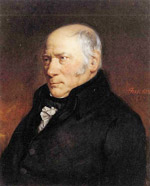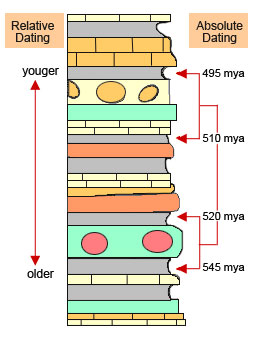
William Smith in 1835
|
Dating Earth Materials
The great abyss of geologic time was discovered in the late 1700s by scientists like William Smith, who used observations of rocks and fossils to piece together an understanding of how Earth has changed over time and to ascertain that it is ancient. Prior to this understanding, it was largely accepted that Earth was only a few thousand years old. As scientists began observing more of the fossil record, they began to recognize that Earth must be older than they had ever thought before. In studying geologic time, two prominent methods of recording history were developed:
Relative dating. This method of dating ancient events and structures (such as fossils or rocks) was developed first and is used to place things in a sequential order. It is used to demonstrate that certain rocks are older or younger than other rocks or that fossil A lived before fossil B, etc. It cannot be used to assign a specific numerical age to things. Relative dating is based upon study of the fossil record and was first discovered and used by William Smith. Notice in the drawing here that it is only used to determine if layers are relatively younger or older in relation to each other.
|

|
Absolute dating. This method of dating things was developed more than one hundred years later. Unlike relative dating, absolute dating can be used to assign a specific numerical age to events or structures. With absolute dating, we can say that a certain fossil is 1.2 million years old, or that the Grand Canyon is 17 million years old, etc. In the drawing here, the numerical ages of various rock layers are shown on the far right (mya stands for million years ago, meaning when the rock layer was formed).
|
Notice the difference between the two methods of dating—one is more specific than the other.
© KC Distance Learning. All rights reserved.

